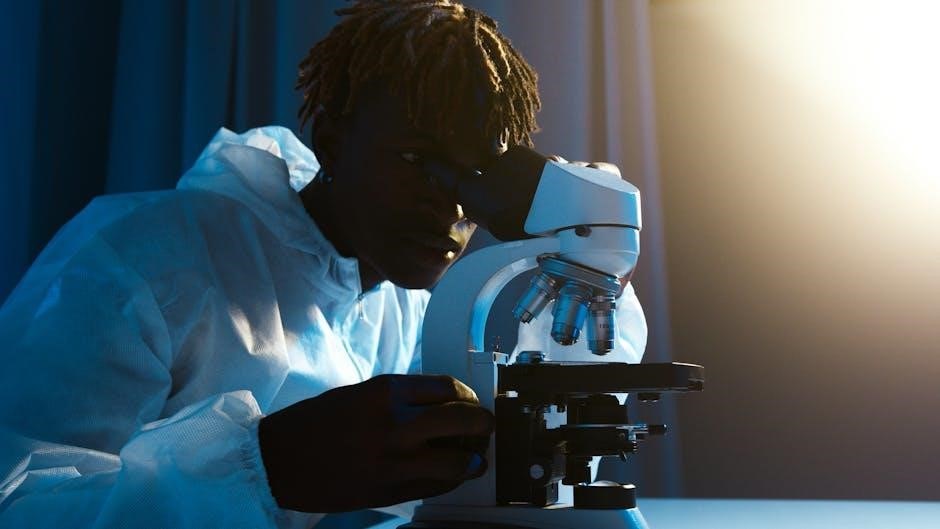A Sterile Processing Technician ensures medical instruments are safely cleaned, sterilized, and prepared for use, playing a critical behind-the-scenes role in preventing infections and patient safety.
Overview of the Sterile Processing Technician Profession
Sterile Processing Technicians (SPTs) play a vital role in healthcare by ensuring medical instruments are properly cleaned, disinfected, and sterilized. Their work is essential for preventing infections and maintaining patient safety. Key responsibilities include decontaminating soiled instruments, operating sterilization equipment, and maintaining accurate records. SPTs must understand medical terminology, anatomy, and the principles of sterilization to recognize and process instruments correctly. The profession requires attention to detail, physical stamina, and adherence to strict safety protocols. Certification, such as CRCST or CSPDT, is often required and demonstrates expertise. This role is critical in supporting surgical teams and ensuring the availability of sterile equipment for procedures, making it a cornerstone of healthcare operations.
Importance of Sterile Processing in Healthcare Settings
Sterile processing is critical in healthcare for preventing infections and ensuring patient safety. Proper sterilization of medical instruments eliminates pathogenic microorganisms, reducing the risk of surgical site infections. This process is essential for maintaining trust in healthcare services, as contaminated instruments pose significant risks. Additionally, sterile processing ensures that medical instruments remain functional and reliable, aiding healthcare professionals in providing effective care; The accuracy of sterilization records also supports quality control, making it a cornerstone of healthcare operations. By adhering to strict protocols, sterile processing technicians contribute to the overall success of medical procedures and patient recovery. Their role is indispensable in maintaining the highest standards of care.
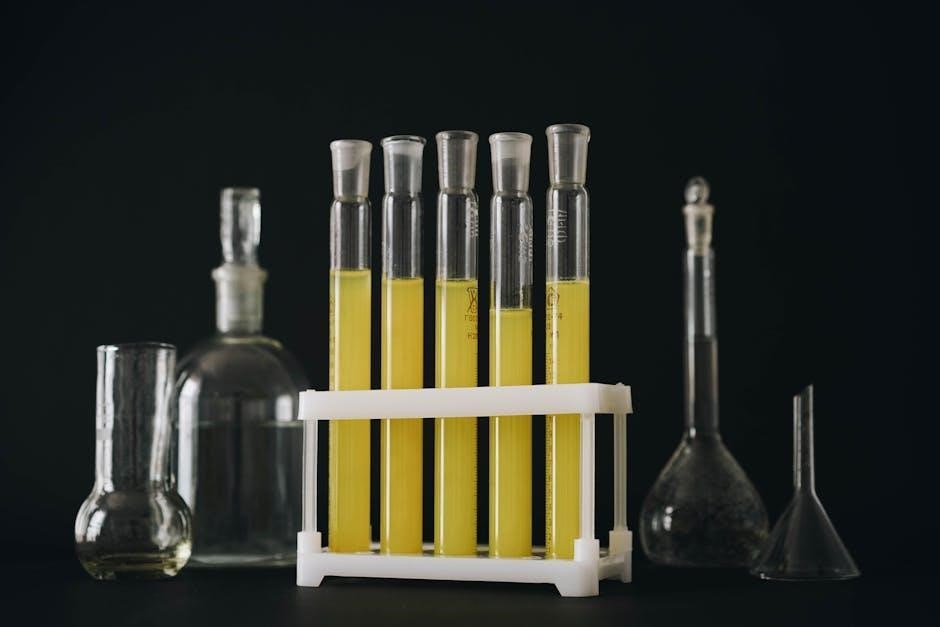
Foundational Concepts for Sterile Processing
Understanding basic anatomy, recognizing medical instruments, and grasping pathogenic microorganisms are key. These concepts guide technicians in effectively cleaning, disinfecting, and sterilizing equipment, ensuring patient safety and operational efficiency.
Anatomy and Physiology Basics for Instrument Recognition
Understanding anatomy and physiology is essential for sterile processing technicians to identify medical instruments accurately. Knowledge of human body systems, surgical procedures, and instrument functions ensures proper handling and sterilization. Recognizing instrument types, such as forceps, retractors, and scalpels, is critical for effective decontamination and sterilization processes. This foundational understanding helps technicians match instruments to their intended uses, ensuring they are prepared correctly for surgical procedures. Studying anatomy and physiology also aids in recognizing instrument damage or wear, preventing the use of compromised tools. This expertise is vital for maintaining patient safety and operational efficiency in healthcare settings. The study guide provides detailed resources to master these concepts effectively.
Pathogenic Microorganisms and Their Impact on Sterility
Understanding pathogenic microorganisms is crucial for sterile processing technicians, as these microbes can cause infections if not properly eliminated. Pathogens include bacteria, viruses, fungi, and protozoa, each requiring specific sterilization methods. Bacterial spores, for instance, are highly resistant to heat and chemicals, necessitating high-temperature steam sterilization. Viruses vary in resistance, with some surviving standard disinfection processes. Fungal and protozoal contaminants also pose risks if not adequately addressed. Recognizing these microorganisms ensures effective sterilization, preventing patient infections and maintaining instrument safety. The study guide provides detailed insights into microbial biology and strategies to combat contamination, ensuring sterile processing technicians can apply best practices in healthcare settings. This knowledge is vital for upholding patient safety and operational standards.
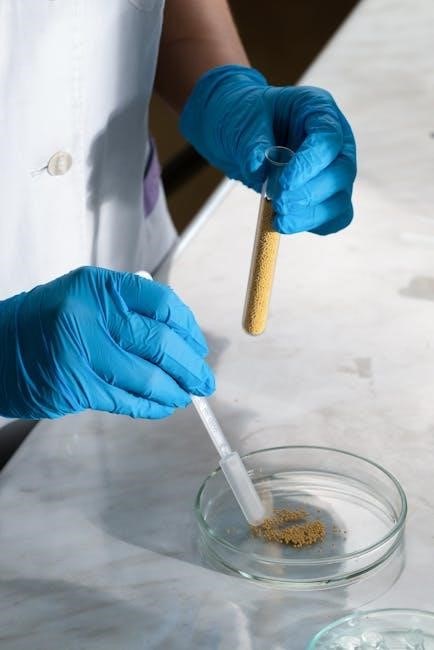
Key Processes in Sterile Processing
Key processes include decontamination, cleaning, disinfection, sterilization, packaging, and storage of medical instruments to ensure they are safe for patient use and prevent infections.
Decontamination Procedures for Surgical Instruments
Decontamination is the first step in processing surgical instruments, involving the removal of contamination to prevent infection spread. This includes manual or mechanical cleaning, and ultrasonic methods to break down protein-based soils. Proper techniques ensure instruments are safe for further sterilization. Using enzyme solutions can dissolve organic matter, while maintaining equipment and following manufacturer guidelines is essential. Training and adherence to protocols ensure consistency and effectiveness in decontamination processes, crucial for patient safety and preventing healthcare-associated infections.
Manual Cleaning vs. Ultrasonic Cleaning: Best Practices
Manual cleaning involves using brushes and detergents to remove contaminants, ideal for delicate instruments. Ultrasonic cleaning uses high-frequency waves to create a cleaning solution, effective for complex tools. Best practices include selecting the method based on instrument type and manufacturer guidelines. Manual cleaning is straightforward but can miss hidden areas, while ultrasonic cleaning is thorough but may damage sensitive materials. Both methods require proper training to ensure effectiveness and prevent instrument damage. Following standardized protocols is crucial to maintain sterility and safety. Regular maintenance of equipment and verification of cleaning outcomes are essential steps in the process. Proper technique ensures instruments are clean and ready for sterilization.
Disinfection Methods and Their Effectiveness
Disinfection is a critical step in sterile processing, reducing microbial load on surfaces and equipment. Common methods include chemical disinfectants, UV light, and hydrogen peroxide vapor. Chemical disinfectants are effective against a broad spectrum of pathogens but may not achieve sterilization. UV light is used for surface disinfection but has limited penetration. Hydrogen peroxide vapor is highly effective but requires specialized equipment. Best practices involve selecting the appropriate method based on the material and intended use. Proper training ensures safe and effective application. Disinfection is essential for non-critical instruments that cannot be sterilized. Regular validation of disinfection processes ensures consistency and reliability, maintaining patient safety and infection control standards.
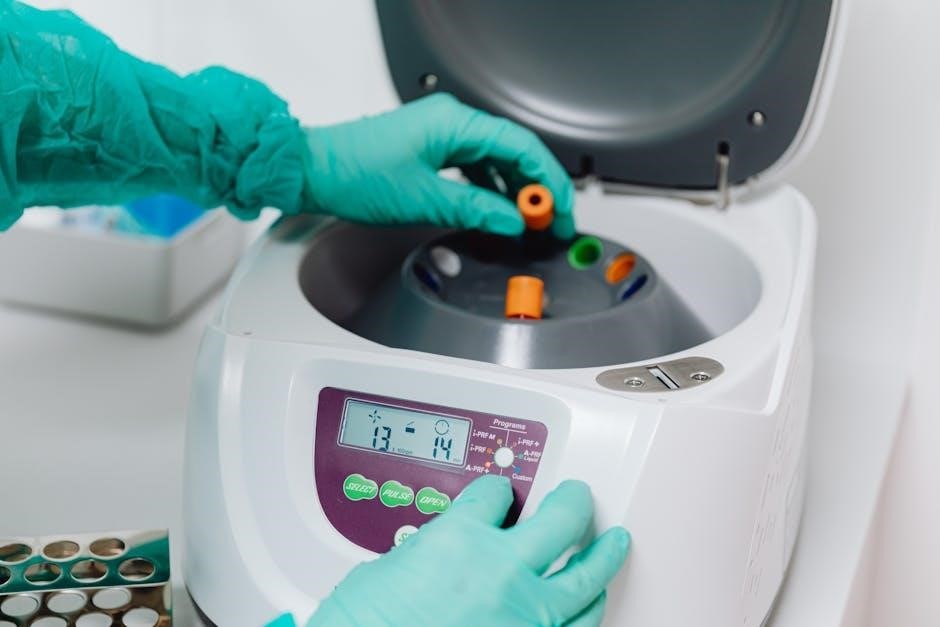
Sterilization Methods and Techniques
Sterilization methods include steam, hydrogen peroxide, and ethylene oxide, each with unique applications and safety considerations. Steam is the most common, using high-pressure steam to eliminate microorganisms effectively. Hydrogen peroxide offers chemical sterilization without toxic residues. Ethylene oxide is ideal for heat-sensitive equipment but requires careful handling due to its hazardous nature. These techniques ensure medical instruments are free from pathogens, crucial for patient safety and infection prevention in healthcare settings.
Steam Sterilization: Principles and Applications
Steam sterilization, or autoclaving, is a widely used method in healthcare for eliminating microorganisms. It employs high-pressure steam to achieve temperatures that destroy pathogens. The process relies on steam’s ability to transfer heat efficiently, making it effective for heat-resistant materials like metal instruments. Applications include surgical tools, glassware, and certain plastics. Steam sterilization is monitored using indicators such as chemical strips that confirm exposure. It’s unsuitable for heat-sensitive items, highlighting its limitations. This method is crucial for ensuring patient safety and infection control, making it a cornerstone in sterile processing procedures.
Hydrogen Peroxide Sterilization: Advantages and Limitations
Hydrogen peroxide sterilization is a chemical-based method effective against bacteria, viruses, and fungi, ideal for heat-sensitive items; Its advantages include low toxicity, no harmful residues, and compatibility with plastics and electronics. It operates at lower temperatures than steam, reducing material degradation. However, it requires longer cycle times and specialized equipment. Its limitations include potential material incompatibility and the need for aeration to remove residues. Despite these, it’s widely used for delicate instruments, showcasing its versatility in sterile processing. Proper training and equipment maintenance are crucial for effective application, ensuring safety and sterility in healthcare settings.
Ethylene Oxide Sterilization: Uses and Safety Precautions
Ethylene oxide sterilization is a widely used method for heat-sensitive medical devices, ensuring thorough disinfection without damage. It is effective against bacteria, viruses, and fungi, making it ideal for complex instruments. However, ethylene oxide is toxic and carcinogenic, requiring strict safety measures. Technicians must handle it in well-ventilated areas, wearing PPE, including gloves and respirators. Proper aeration post-sterilization is essential to remove residues. Equipment must be maintained according to guidelines, and exposure limits should be monitored. Despite its effectiveness, its hazardous nature necessitates careful handling and adherence to safety protocols to protect both patients and staff. Training on safe practices is crucial for all involved in this process.
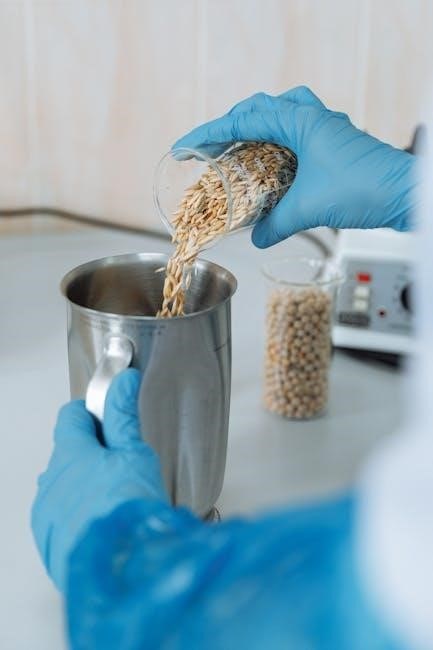
Quality Control and Assurance in Sterile Processing
Quality control ensures all sterilized instruments meet safety standards, requiring accurate record-keeping, regular equipment maintenance, and rigorous testing to guarantee patient safety and compliance with regulations.
Importance of Maintaining Accurate Sterilization Records
Maintaining precise sterilization records is crucial for ensuring patient safety, legal compliance, and operational efficiency. These records document the sterilization process, including dates, times, and parameters used, providing traceability for every instrument. Accurate records help identify potential failures and ensure accountability. They also facilitate audits and compliance with regulatory standards. Proper documentation supports quality control by tracking instrument cycles and verifying sterility. In case of adverse events, records serve as critical evidence. Additionally, they aid in staff training and performance evaluation; Without accurate records, healthcare facilities risk patient harm, legal repercussions, and accreditation issues. Thus, meticulous record-keeping is a cornerstone of effective sterile processing management.
Equipment Maintenance and Functional Checks
Regular equipment maintenance and functional checks are vital to ensure the effectiveness and reliability of sterilization processes. Technicians must perform routine inspections, cleaning, and lubrication of machinery to prevent malfunctions. Pre-use tests, such as checking temperature, pressure, and cycle times, confirm equipment is operating within specified parameters. Proper maintenance extends equipment lifespan and prevents costly repairs. Additionally, functional checks ensure consistent sterilization outcomes, reducing the risk of instrument contamination. Adhering to manufacturer guidelines and documenting maintenance activities is essential for compliance and quality control. Failure to maintain equipment can lead to sterilization failures, compromising patient safety and operational efficiency. Therefore, meticulous attention to equipment upkeep is critical in sterile processing environments.
Certification and Training for Sterile Processing Technicians
Certification and training are crucial for sterile processing technicians, ensuring proficiency in sterilization methods, instrument recognition, and infection control. Rigorous programs and study guides prepare technicians for exams like CRCST and CSPDT, equipping them with essential skills to maintain patient safety and compliance.
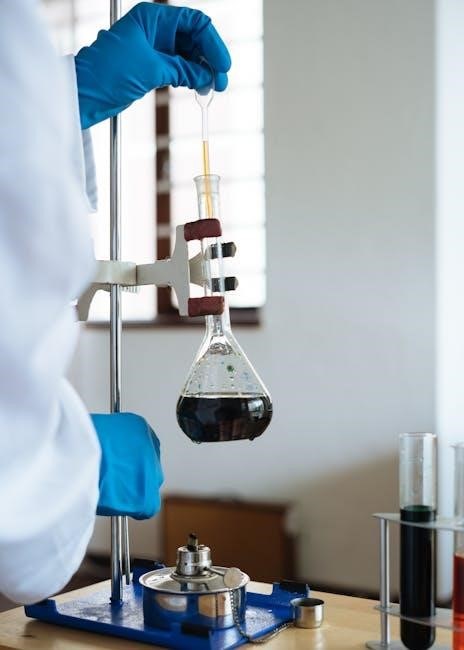
Certified Registered Central Service Technician (CRCST) Exam
The Certified Registered Central Service Technician (CRCST) exam is a critical certification for sterile processing professionals, validating their expertise in instrument sterilization and patient safety. Administered by the Healthcare Sterile Processing Association (HSPA), the exam assesses knowledge in decontamination, sterilization, and infection control. It consists of multiple-choice questions covering foundational concepts, equipment operation, and quality assurance. Preparation involves studying the Sterile Processing Technician Study Guide and practicing with sample questions. Passing the CRCST exam demonstrates a technician’s ability to adhere to industry standards and ensure the safe processing of medical instruments, making it a cornerstone of professional advancement in sterile processing.
Certified Sterile Processing and Distribution Technician (CSPDT) Exam
The Certified Sterile Processing and Distribution Technician (CSPDT) exam is designed to validate the skills of professionals responsible for the sterilization, storage, and distribution of medical instruments. Offered by the Certification Board for Sterile Processing and Distribution (CBSPD), this certification focuses on infection prevention, sterilization techniques, and quality control. The exam format includes multiple-choice questions and practical scenarios, requiring a strong understanding of industry standards and best practices. Utilizing study resources like the Sterile Processing Technical Manual and practice exams ensures comprehensive preparation. Achieving CSPDT certification enhances career opportunities and demonstrates a commitment to patient safety and professional excellence in sterile processing environments.
Study Resources and Practice Exams for Certification
Effective preparation for sterile processing technician certification requires comprehensive study resources and practice exams. The 9th Edition Sterile Processing Technical Manual is a cornerstone, offering detailed content on sterilization methods, infection control, and quality assurance. Additionally, study guides like the CRCST Exam Prep Study Guide and CSPDT Exam Study Guide provide focused material, including practice questions and detailed explanations. Retired test questions and case studies help candidates familiarize themselves with exam formats and scenarios. Online platforms also offer practice exams and interactive resources to reinforce learning. Utilizing these tools ensures a thorough understanding of key concepts, enhancing confidence and readiness for certification exams in sterile processing.
Comprehensive Study Guide for Sterile Processing Technicians
The 9th Edition Sterile Processing Technical Manual is a vital resource, offering structured content, terms, definitions, and practice questions to aid in mastering sterile processing techniques and certification exams.
Structure and Content of the 9th Edition Sterile Processing Technical Manual
The 9th Edition Sterile Processing Technical Manual is a comprehensive resource designed for technicians, offering detailed chapters on sterile processing principles, techniques, and best practices. It includes structured content, definitions, and practice questions to enhance understanding and exam preparation. The manual covers essential topics such as decontamination, sterilization methods, and quality control, providing practical insights and real-world applications. Supplementary materials, like workbooks and practice exams, complement the guide, ensuring thorough mastery of sterile processing protocols. This edition is tailored to meet the educational needs of both novice and experienced technicians, serving as an invaluable tool for certification preparation and professional development in the field.
Practice Questions and Case Studies for Exam Preparation
Practice questions and case studies are essential tools for exam preparation, offering hands-on experience with real-world scenarios. The 9th Edition Sterile Processing Technical Manual includes retired test questions, allowing technicians to familiarize themselves with exam formats and content. Case studies provide practical examples of challenges in sterile processing, such as instrument identification or sterilization errors, enabling technicians to apply theoretical knowledge. These resources help identify knowledge gaps and improve problem-solving skills. Additionally, practice exams simulate actual test conditions, ensuring technicians are confident and prepared for certification. Regular review of these materials enhances critical thinking and ensures mastery of sterile processing protocols, leading to successful exam outcomes.
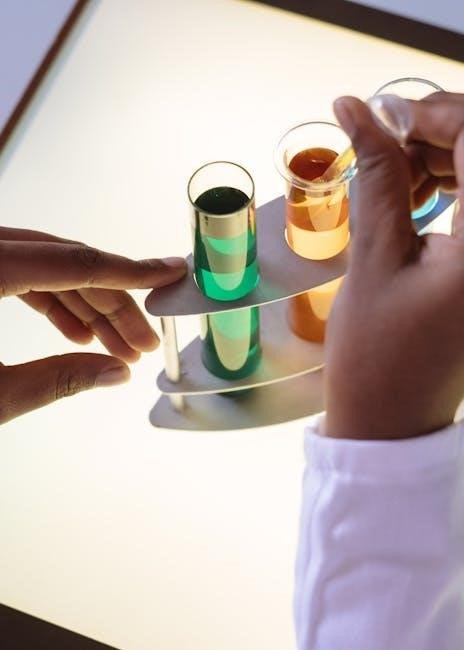
Central Service One-Way Work Flow
- Decontamination, cleaning, and preparation of soiled instruments.
- Packaging and sterilization of clean instruments.
- Sterile storage and distribution of processed items.
This process ensures efficiency and patient safety.
Decontamination and Preparation of Soiled Instruments
Decontamination is the first step in the sterile processing cycle, involving the removal of soil, organic matter, and microorganisms from instruments. This process begins with manual or mechanical cleaning using enzymatic solutions and ultrasonic cleaners to break down tough residue. Instruments are then rinsed thoroughly to remove any remaining contaminants. After cleaning, instruments are dried to prevent rust or corrosion. Proper preparation includes inspecting instruments for damage, ensuring they are functional, and arranging them according to manufacturer guidelines. This step is critical for ensuring patient safety and preventing the spread of infections. Accurate documentation of the process is also essential for maintaining quality control.
Packaging and Sterilization of Clean Instruments
Packaging and sterilization are critical steps in ensuring clean instruments remain sterile until use. Instruments are placed in specialized packaging materials, such as peel pouches or rigid containers, designed to maintain sterility. Each package is labeled with the content, date, and sterilization method. Chemical indicators are included to confirm successful sterilization. Sealing ensures no contaminants enter during storage or transport. Sterilization methods vary, including steam, hydrogen peroxide, or ethylene oxide, each with specific applications. Biological indicators are used to verify sterilization effectiveness. Proper documentation and traceability are essential for quality control. This process ensures instruments are safe for surgical use and maintains patient safety standards.
Sterile Storage and Distribution Processes
Sterile storage ensures instruments remain contamination-free until use. Instruments are stored in controlled environments with consistent temperature, humidity, and limited access. Packaging must remain intact, with expiration dates clearly marked. Inventory is managed using a first-in, first-out system to prevent outdated supplies. Sterile items are stored in sealed containers or on shelves, protected from dust and moisture. Distribution involves delivering supplies to surgical or clinical departments, ensuring sterility is maintained during transport. Electronic tracking systems may be used to monitor stock levels and expiration dates. Proper handling and documentation are critical to ensure patient safety and compliance with infection control standards.
Advanced Topics in Sterile Processing
Advanced topics include rapid sterilization techniques, handling specialized instruments, and managing urgent situations, ensuring efficiency and safety in high-pressure healthcare environments.
Rapid Sterilization Techniques for Urgent Situations
Rapid sterilization methods are essential in urgent healthcare scenarios where delays can impact patient outcomes. These techniques include flash sterilization, which uses high-pressure steam for quick turnaround, and hydrogen peroxide gas/plasma sterilization, offering fast and safe results. Proper training and adherence to guidelines are crucial to ensure efficacy and safety. These methods are typically reserved for critical situations, such as emergency surgeries, where immediate instrument availability is vital. Regular maintenance of sterilization equipment and staff competency assessments ensure these processes meet stringent standards, maintaining patient safety and procedural efficiency in high-stakes environments.
Handling and Processing of Specialized Medical Instruments

Specialized medical instruments, such as endoscopes or robotic surgical components, require unique handling and processing steps to ensure their functionality and sterility. These instruments often have complex designs, making them prone to damage if mishandled. Technicians must follow precise manufacturer guidelines for cleaning, disinfection, and sterilization, as standard methods may not be sufficient. Detailed steps include disassembling components, using ultrasonic cleaners for delicate parts, and verifying compatibility with sterilization methods like hydrogen peroxide gas or low-temperature steam. Proper packaging and storage are also critical to maintain sterility and prevent damage. Regular maintenance and quality checks ensure these instruments remain safe and effective for patient care.

Career Development and Resources
Professional associations like HSPA and CBSPD offer certifications, workshops, and networking opportunities. Resources include study guides, online courses, and forums for continuous education and skill enhancement in sterile processing.
Professional Associations for Sterile Processing Technicians
Professional associations like the Healthcare Sterile Processing Association (HSPA) and the Certification Board for Sterile Processing and Distribution (CBSPD) provide essential resources. These organizations offer certifications, such as the Certified Registered Central Service Technician (CRCST) and Certified Sterile Processing and Distribution Technician (CSPDT). They also host workshops, webinars, and networking events to enhance professional development. Members gain access to updated study guides, practice exams, and educational materials tailored for exam preparation. These associations play a crucial role in maintaining high standards within the field, ensuring technicians stay informed about the latest techniques and technologies. By joining, professionals can advance their careers and contribute to the continuous improvement of sterile processing practices.
Continuous Education and Skill Enhancement Opportunities
Continuous education is vital for sterile processing technicians to stay updated on best practices and advancements. Professional associations offer workshops, webinars, and online courses to enhance skills. Many programs provide hands-on training, allowing technicians to practice advanced sterilization techniques and instrument handling. Online resources, such as study guides and practice exams, are widely available to support self-paced learning. Additionally, attending industry conferences and seminars provides networking opportunities and insights into emerging technologies. Employers often encourage continuing education through tuition reimbursement or on-site training programs; By pursuing ongoing education, technicians can expand their expertise, improve patient safety, and advance their careers in this critical healthcare field.
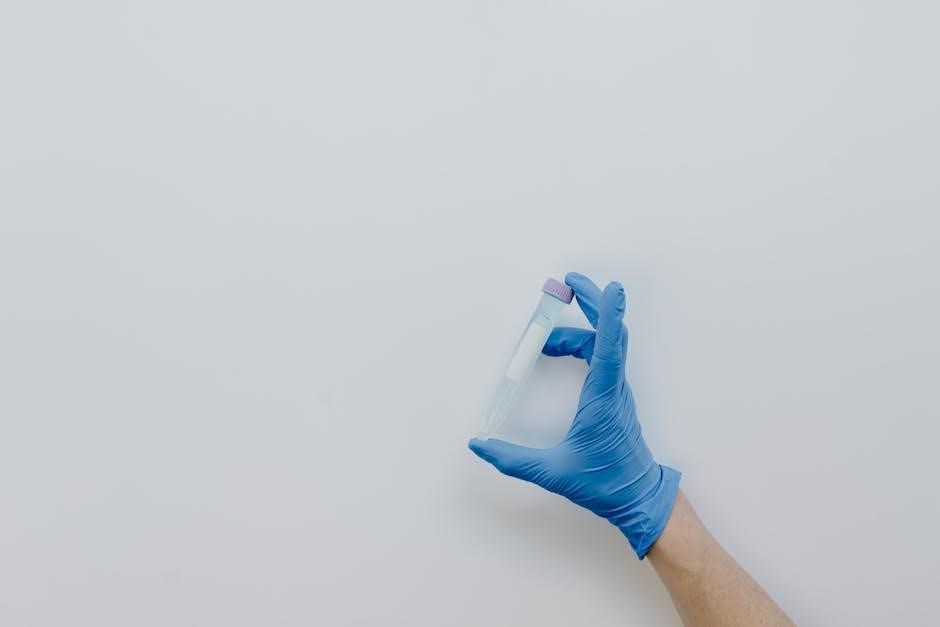
Final Exam Preparation and Study Strategies
Utilize practice exams, study guides, and online resources to master sterilization methods and infection control. Focus on time management and understanding key concepts for exam success.
Time Management and Effective Study Techniques
Effective time management is crucial for success. Create a study schedule, allocating specific time slots for each topic, such as sterilization methods or anatomy basics. Prioritize challenging areas and review regularly. Use active learning techniques like flashcards and practice questions to reinforce knowledge. Break study sessions into manageable chunks to maintain focus and retain information better. Utilize available resources, such as the Sterile Processing Technical Manual and online practice exams, to simulate real test conditions. Stay organized, track progress, and adjust study plans as needed to ensure comprehensive preparation for the certification exam.
Utilizing Online Resources and Study Groups for Success
Leveraging online resources and study groups is essential for effective exam preparation. Websites offer practice exams, study guides, and interactive tools to enhance understanding. Joining study groups provides opportunities for collaborative learning, where peers can discuss challenging topics and share knowledge. Utilize forums and discussion boards to clarify doubts and gain insights from experienced technicians. Online resources, such as the 9th Edition Sterile Processing Technical Manual, provide comprehensive study materials. Additionally, retirement practice questions and mock exams help simulate real-test conditions. Engaging with online communities and study platforms fosters a supportive environment, ensuring a well-rounded and confident approach to certification.
